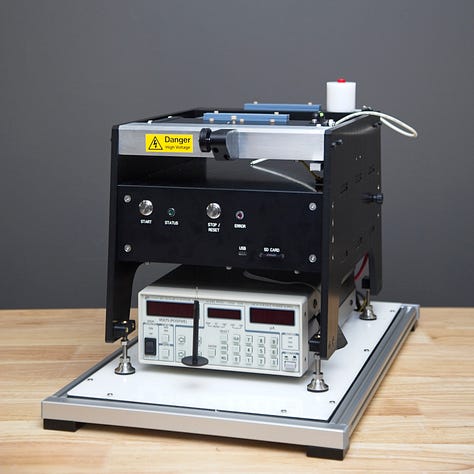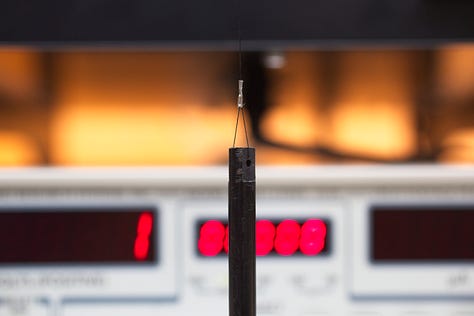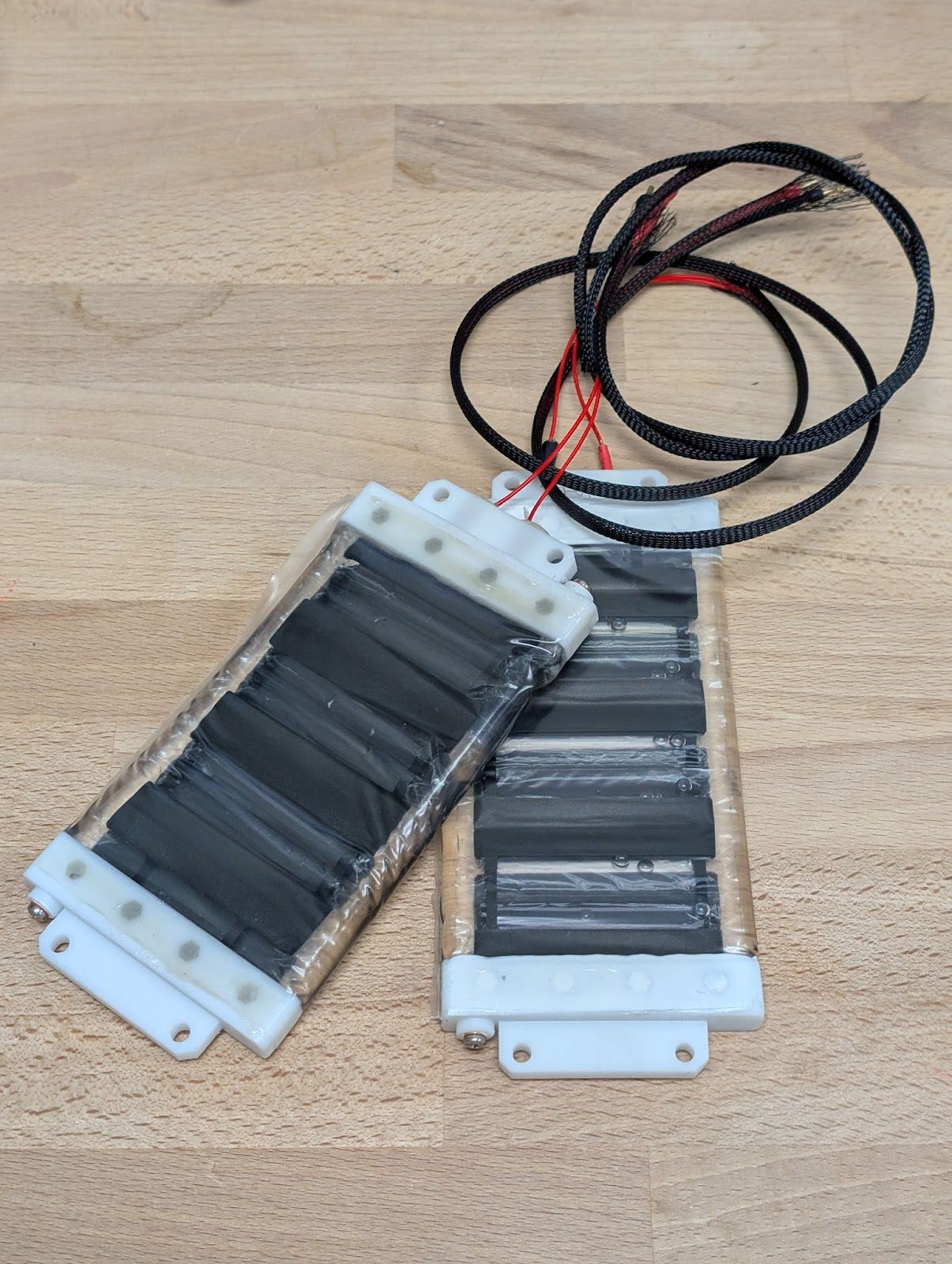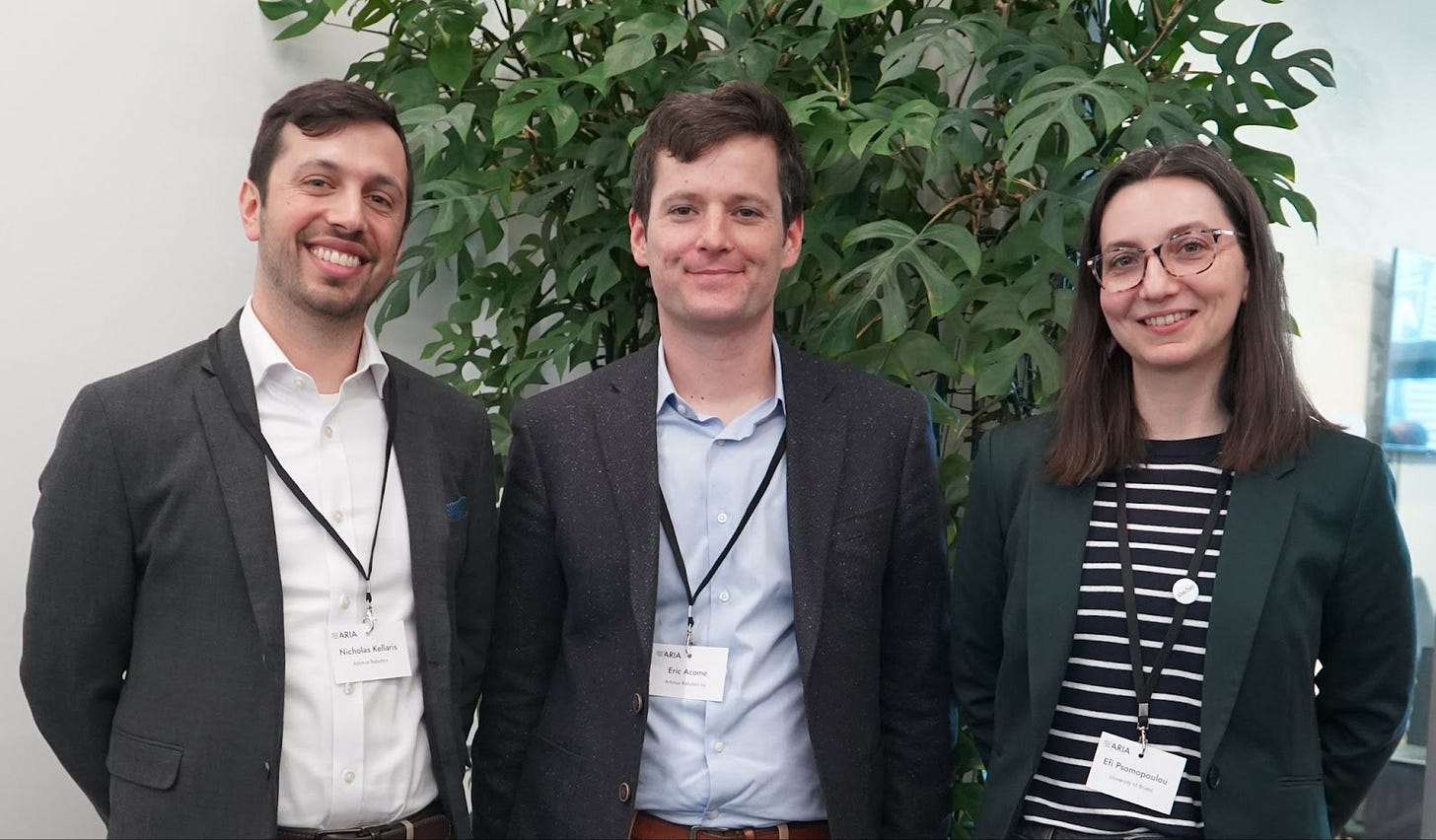Massively scalable neurotech, bespoke engineering solutions, and new material systems
The latest from ARIA, including new potential programme thinking from PD Jacques Carolan.
Before we dive in, a note from us:
Our Substack has always been the place for us to give our community a closer look at what we're working on at ARIA, from the behind-the-scenes of our Programme Director search to a deep-dive into what it means to be an ARIA Creator.
Now, to give a broader picture, we're bringing you more each month – not just the latest news and key insights, but also a look inside Creator projects, spotlights and opportunities from our Activation Partners, and resources from our Frontier Specialists.
Let us know what you think in the comments.
What’s new at ARIA
Explore our latest opportunity space, Engineering Ecosystem Resilience: Programme Director Yannick Wurm asks if, by pairing advanced monitoring with resilience-boosting interventions, we could halt biodiversity loss and enable people and nature to thrive. Dive in and share your thoughts.
Dig into our new programme theses:
In Sustained Viral Resilience, Programme Director Brian Wang aims to catalyse a new era of innate immunotherapies, creating a launchpad to tackle not just viruses, but a range of diseases. Read it and share your feedback.
In Perpetual Flight, Programme Director Rico Chandra explores aircraft that harness atmospheric energy to stay aloft for years, delivering digital services with vastly greater flexibility and precision. Read it and share your feedback.
Discover projects we’re funding in Safeguarded AI. The teams in TA1.2 and TA1.3 are aiming to collaboratively design and build a single, open-source software platform. Find out more.
Dive into the findings of our TA3 Robot Dexterity experts, who gathered insights from across the robotics community to provide actionable recommendations around modularity and interoperability. Find out more.
Join us at The Drop for a pitch night on the future of climate tech that’s designed to surprise. Register to attend on 16 September.
Get involved with opportunities from our Activation Partners:
Submit a proposal for Renaissance Philanthropy’s Frontier Research Contractor Launchpad (FRCL). Apply by 31 August.
Join Cambridge Neuroworks’ Part-Time ‘What If’ Programme. Apply by 3 September.
There’s still time to join Fifty Years’ flagship 5050 programme, helping great scientists become great founders. Apply by 14 September.
Discover upcoming events from our Activation Partners:
Encode’s AI for Science Salon on ‘Translating Discovery’ will explore the different pathways for ideas to move from lab to public. Register to join on 2 September.
At ‘Building An Aligned AI Future’, Fifty Years’ Scott Phoenix will share hard-won insights on choosing what to build as we race toward AGI. Register to join on 3 September.
Venture Cafe’s events over September focus on the likes of ‘AGI and Beyond: Where is AI Really Heading?’ and ‘Shaping the Next Age of Innovation in the Material World’. See the calendar.
Cambridge Neuroworks’ ‘Neurotech: Developing Brainy Ideas Through Clever Design’ will be an evening of thought-provoking discussions and networking. Register to join on 15 September.
Massively Scalable Neurotechnologies: A Possible New ARIA Programme
Programme Director Jacques Carolan shares his thinking.
What if treating severe depression was as simple as a flu jab? A single injection that precisely and actively tunes your brain's mood circuits for months at a time.
What if we could reverse Parkinson's with a nasal spray? A cell therapy that autonomously replaces lost neurons, dramatically improving motor function without brain surgery.
Or if a simple blood test could give your psychiatrist a biological report from your brain? A direct readout to diagnose your condition and select the right treatment on the first try.
Powerful treatments for devastating brain disorders are on the horizon, but they are fundamentally unscalable, accessible only to a tiny fraction of the millions who need them.
Brain disorders are already the single biggest disease burden globally, twice that of cardiovascular disease and stroke, with annual costs in Europe and the USA estimated to be $1.7 trillion for neurological conditions alone. Yet our current interventions won't meet the overwhelming need.
Consider deep brain stimulation for Parkinson’s disease. Despite being FDA-approved for over 20 years with high response rates and global reimbursement, the number of procedures is increasing significantly slower than the number of people who could possibly benefit from the technology. This is not a gap; it is a systems-level failure of profound consequence. The problem is not a lack of efficacy, but a lack of a viable path to scale. The entire paradigm of complex surgical procedures is fundamentally incompatible with treating disease at the population level: it’s too resource intensive, at a human and capital level, takes too long and carries non-negligible risks for patients.
That’s why we need a new paradigm for neurotechnologies, designed from the start to be massively scalable. And it’s not a pipe dream. There’s a confluence of advances in molecular and cellular biology, nanotechnology, and applied physics that now makes a truly scalable platform for neurotechnologies possible.
I'm scoping a new ARIA programme to tackle this challenge. We believe the answer lies in the intersection of engineered biology and engineered hardware to create a 'surgery-free' neurotechnology.
Read the full piece here to find out more about the problem, why the field of cardiology provides the perfect case study, and the questions we need your help to tackle as we develop this new ARIA programme.
Activation Partners: Inside Amodo Design’s bespoke engineering responses
To realise the full potential of breakthrough science, it needs multiple pathways to the real world. That’s where our Activation Partners play a vital role — helping to create the conditions for bold ideas to thrive, building and connecting communities, and empowering those driving impact beyond the lab.
Our Activation Partnership with engineering consultancy Amodo Design is designed to ensure ARIA Creators – the individuals and teams we fund – aren’t forced to choose between adapting their research to work with off-the-shelf equipment, or abandoning promising research paths due to a lack of bespoke equipment. Amodo designs and manufactures custom hardware to de-bottleneck research. In the last 10 months, Amodo has worked on 16 projects for our Creators, with many more in the pipeline.



A recent collaboration with Guggi Kofod, funded through our Robot Dexterity programme, tackled the slow, time-consuming challenge of manual testing. Guggi’s actuator R&D is structured around a ‘test-driven development’ approach, built on running thousands of precise experiments on his materials. To do this, he needed a workhorse materials tester, compatible with not only micron precision measurement but also stimulating actuators with kilovolts. He needed a tool especially designed for his workflow. The goal: make testing a new material as fast and iterative as writing code.
Following eight weeks of close collaboration and a considerable engineering effort, Amodo’s response was to create PLIFUNC – an electrostatic muscle test rig with a high level of precision and accuracy to routinely conduct tests. Amodo ran four design sprints, designed and brought up a new control PCB, and iteratively prototyped six alternative low-friction measurement carriages. The project required parts machined in-house, high-voltage electronics design, and fast and reliable firmware.
The resulting device allowed Guggi to go from a hypothesis to tangible data in just 15 minutes. “We started useful experiments several months before we otherwise could have, and protocols for data capture were explored and integrated without uncertainty, expanding our capacity for core development,” he says.
Dive into the full case study.
New material systems for HASEL actuators:
A Q&A with Nick Kellaris (Artimus Robotics) and Efi Psomopoulou (University of Bristol)
As part of our Robot Dexterity programme, Creators Nick (Artimus Robotics, based in the US) and Efi (University of Bristol) are working together to build a high-performance, soft artificial hand with human-like dexterity. We recently caught up with them to find out how their cross-Atlantic collaboration is going.
What are you currently working on?
Nick: We’re focused on new materials systems for our soft actuators (termed ‘HASEL actuators’) that will enable them to compete with biological muscle in key performance areas like actuation stress, strain, and speed. Our actuators operate using electrostatic principles, which means they store energy in the same way that capacitors do. And to support our collaboration with the University of Bristol, we’re also building a first prototype of a multi-finger hand using our actuator technology. The whole team meets biweekly for a conference call to update on progress, seek input, and plan next steps. In the future, we plan to have site visits to each other's facilities once we are working with more integrated hardware. It's been working well so far – in some ways it's nice to have such different time zones – like having two work shifts. Hand off information in the evening, and wake up to new results!
Efi: Yes, we met in person for the first time during the ARIA kick-off meeting – it was great to see the actuators developed by Artimus Robotics up close. We’re developing a high-fidelity digital model, a ‘digital twin’, of a custom robot finger powered by soft, voltage-driven artificial muscles. This simulation lets us explore how the finger bends, presses, and grips objects, before any hardware is built, so we can refine the design and understand real-world interactions. Because these muscles have a nonlinear response, the force they generate depends on both the applied voltage and how much they’ve already contracted. Right now, we're building our first controller to take advantage of that behavior and move a single finger precisely and repeatably.
What early findings or signals are emerging from your work so far?
Efi: Translating a custom robot-finger design from CAD to a simulation-ready model proved more involved and more time-consuming than expected. While it can be done manually, the step-by-step conversions and parameter tweaks slow iteration. Automating this process would let us rapidly test and compare design variants. We’re working with ARIA’s Activation Partner, Amodo, to solve this.
Nick: To date, HASEL actuators have primarily been constructed from off-the-shelf materials that have been optimised for use in film capacitors. While these materials serve as a great jumping off point, we are seeing more and more that materials tailored specifically to the needs of our actuators have enormous potential to improve device performance.

What do you wish more people knew about your research area?
Nick: I wish people were more familiar with electrostatic technologies in general! Electromagnetic technologies, like electric motors, are so ubiquitous that many folks don’t realise that there are other ways to achieve motion in a world that is moving towards electrification. Electromagnetic actuation uses high current running through wire to produce magnetic fields; electrostatic actuation, by contrast, uses the direct attractive force that positive and negative charges exert on each other. They don’t require rare-earth elements for high-performance magnets, there is essentially no heat generated during operation, and energy consumption during stall is nearly zero.
Efi: The most basic form of control for a system is a controller called PID, which is widely used in robotics and automation. It’s excellent for straightforward goals like holding a steady speed or position, but I wish more people knew it isn’t the only, or always the best, option. For more complex problems, such as a robot manipulating an object within its hand, the system behaves in nonlinear ways and the contacts are soft and deformable. In these situations, we need to use more advanced, nonlinear control methods that can handle changing conditions and tightly coupled effects. Developing and validating these controllers for robots with soft parts is an active area of research.
And finally, what book/film/tv show should people check out to understand your project or discipline more? Why?
Efi: I recommend Becky Chambers across the board, but especially ‘A Closed and Common Orbit’ if you care about robots and embodiment. It follows a former starship AI learning to live in a human-like body and to manage the awkward, fascinating business of having only two hands. The novel contrasts ship-wide, multi-sensor awareness with the narrow, tactile realities of a single body, offering sharp reflections on sensor fusion and why early motor skills (control) matter.
Nick: Big Hero 6... The movie's about a soft inflatable robot named Baymax, designed to be an at-home caregiver capable of safely interacting with humans – Baymax was actually inspired by researchers at Carnegie Mellon who are focused on the development of robots based on soft pneumatic systems.
Meet the rest of the Creators in Robot Dexterity.
Introducing our F-Spec Corner
ARIA’s inaugural cohort of Frontier Specialists (F-Specs) are a small, dedicated team with the mission to dramatically expand ARIA's technical surface area and sharpen the cutting edge of the science we’re funding. As technical generalists part of the new CTO’s office, Aayush, Alice, Edith and Matt work with ARIA’s Programme Directors and Activation Partners, while also engaging across the global R&D ecosystem to forge novel connections and explore high-risk, high-reward frontiers.
Each issue, we’re going to be asking them to share the resources they’ve been digging into – either to bolster our existing opportunity spaces, or to push the frontiers of what ARIA’s looking into.
First up, check out Aayush’s recommended reads from this month:
Photon transport through the entire adult human head
“Single-photon detectors are crucial for applications with faint light signals, such as quantum communication and medical imaging. They traditionally require cryogenic cooling and superconducting wires that become resistive upon photon absorption. This new work introduces a novel detector using twisted graphene and hexagonal boron nitride. It operates without superconductivity, functioning at temperatures up to 20K by exploiting a bistable state that switches when a photon is detected.
This capability comes right on the heels of a recent demonstration that shows it is possible to achieve photon transmission through the human head. Both of these taken together pave the way for novel neuroimaging capabilities to emerge.”
Hypothalamic deep brain stimulation augments walking after spinal cord injury
“As we explore how the learnings here can be applied to other neurological conditions, we’ve recently been revisiting this paper which shows that walking after a spinal cord injury can be augmented by DBS of the lateral hypothalamus. They uncovered this novel target by systematic examination of regions in mouse models that showed an initial loss of spinal cord projections and decrease in transcriptional activity followed by a resurgence in both. The question we are asking ourselves is: could similar target identification approaches be used to restore mobility after a stroke or a traumatic brain injury and potentially to replace SEEG procedures for drug-resistant epilepsy?”
“As someone who is curious about the role of the nervous system in disorders beyond the brain, this primer on the neuroscience of cancer is quite helpful in understanding how neurotechnologies developed for the brain might influence treatment of cancers mediated by the peripheral nervous system. As the evidence for the role of the nervous system in cancers has recently emerged, there are a lot of open questions with a view towards developing novel therapeutics and adjuvants.”


